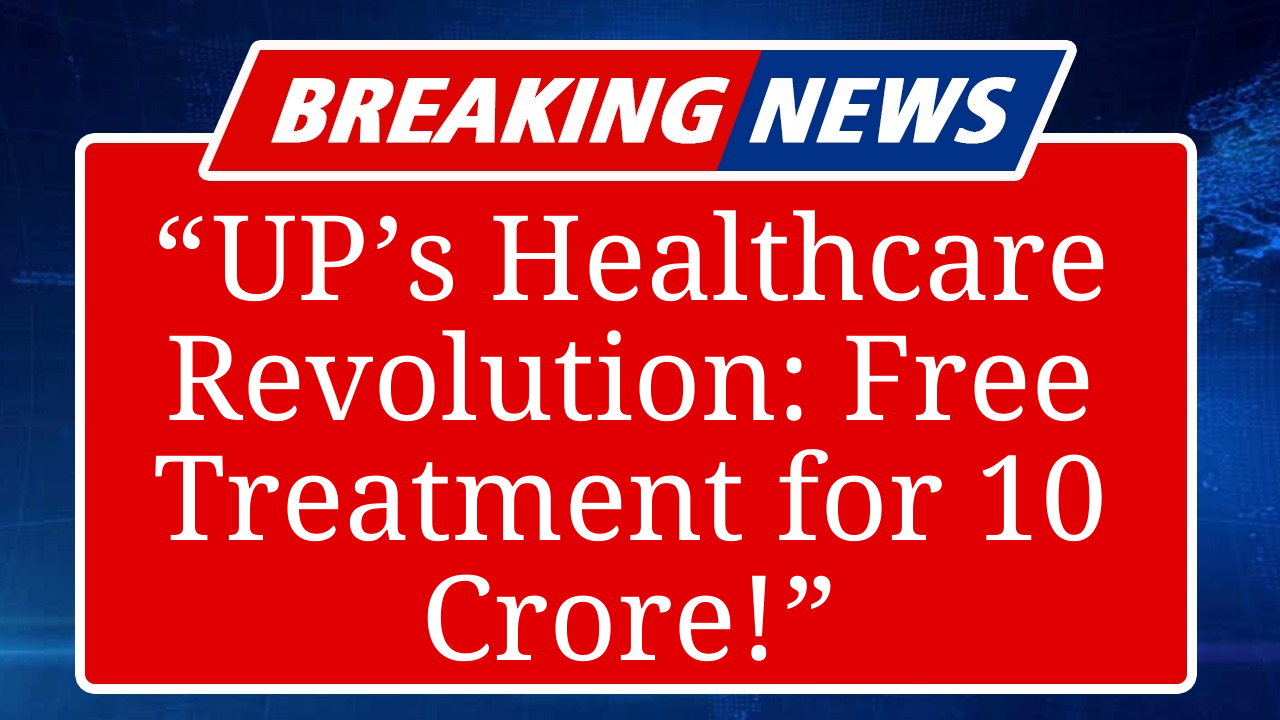“Uttar Pradesh’s implementation of Ayushman Bharat has crossed a significant milestone, with over 10 crore beneficiaries enrolled for free healthcare. The scheme provides up to ₹5 lakh per family annually for hospitalisation, easing financial burdens for the poor. Recent expansions include senior citizens above 70, with UP leading in card distribution and healthcare access.”
Uttar Pradesh’s Ayushman Bharat Milestone: Healthcare for Millions
Uttar Pradesh, India’s most populous state, has achieved a remarkable feat in its implementation of the Ayushman Bharat Pradhan Mantri Jan Arogya Yojana (AB PM-JAY), enrolling over 10 crore beneficiaries under the world’s largest publicly funded health assurance scheme. Launched in 2018, the initiative offers cashless healthcare coverage of up to ₹5 lakh per family per year for secondary and tertiary care hospitalisation, targeting economically disadvantaged sections. The state’s aggressive push to expand coverage has positioned it as a leader in the scheme’s rollout, with significant strides in 2024 and 2025.
The scheme, aligned with the National Health Policy 2017, aims to provide Universal Health Coverage (UHC) to over 12 crore families nationwide, with UP alone accounting for a substantial portion of the beneficiary base. According to recent data, UP has issued over 10 crore Ayushman cards, enabling access to empanelled public and private hospitals across the country. This includes coverage for critical treatments like oncology, cardiology, and orthopaedics, as well as post-discharge care and multi-surgical procedures.
A key development in 2024 was the expansion of AB PM-JAY to include all senior citizens aged 70 and above, regardless of income, announced by the Union Cabinet on September 11, 2024. In UP, this has led to the issuance of Ayushman Vaya Vandana cards, with over 2.5 lakh senior citizens enrolled by mid-2025. These cards provide an additional ₹5 lakh top-up coverage exclusively for seniors, ensuring they do not share the family quota. The state’s proactive measures, such as door-to-door campaigns and camps at public places like railway stations, have accelerated card distribution, particularly in rural areas where healthcare access is limited.
Bihar, another state with robust enrolment, reported 3.94 crore Ayushman cards by June 2025, saving beneficiaries over ₹1,000 crore in out-of-pocket expenses in a single year. UP’s figures are even more substantial, with claims processed for over 15 lakh treatments in 2024-25, reflecting the scheme’s impact on reducing financial distress. For instance, in districts like Varanasi and Lucknow, patients have accessed free cancer treatments and surgeries, which would have otherwise been unaffordable. A beneficiary from Gorakhpur shared, “My heart surgery was done without any cost. Without Ayushman Bharat, my family would have been in debt.”
The state government has also integrated the National Food Security Act (NFSA) database to expand eligibility, bringing more ration cardholders into the fold. ASHA workers in UP have been incentivised with ₹15 per verified enrolment, up from ₹5, to ensure no eligible individual is left behind. Additionally, the Ayushman Bharat Digital Mission (ABDM) has bolstered the scheme’s efficiency, with over 79.91 crore Ayushman Bharat Health Accounts (ABHAs) created nationwide by August 2025, many in UP, facilitating seamless digital health records and telemedicine services.
Despite its success, challenges persist. Reports of fraud, such as fake medical bills and claims for non-performed surgeries, have led to penalties and delisting of 97 hospitals nationwide, including some in UP. The state is addressing these issues through stricter monitoring and audits. Moreover, while UP has made significant progress, the scheme’s absence in Delhi and West Bengal, due to political decisions, highlights uneven implementation across India.
The integration with the Employees’ State Insurance Corporation (ESIC) has further strengthened the ecosystem, allowing ESIC beneficiaries to access AB PM-JAY empanelled hospitals. In UP, this has improved utilisation of underused healthcare facilities, with funds reimbursed under the scheme being reinvested to enhance infrastructure. The state’s focus on Health and Wellness Centres (HWCs) under Ayushman Bharat has also brought primary healthcare closer to rural populations, with plans to establish 1.5 lakh HWCs nationwide by 2026.
UP’s achievement underscores the transformative potential of Ayushman Bharat in addressing healthcare inequities. With ongoing efforts to expand coverage and improve infrastructure, the state is setting a benchmark for delivering accessible, quality healthcare to millions.
Disclaimer: This article is based on recent reports, official statements from the National Health Authority, and government press releases. Data is sourced from credible outlets like The Hindu, Economic Times, and DD News, reflecting information available as of September 2025. Readers are advised to verify eligibility and benefits through official AB PM-JAY portals.

